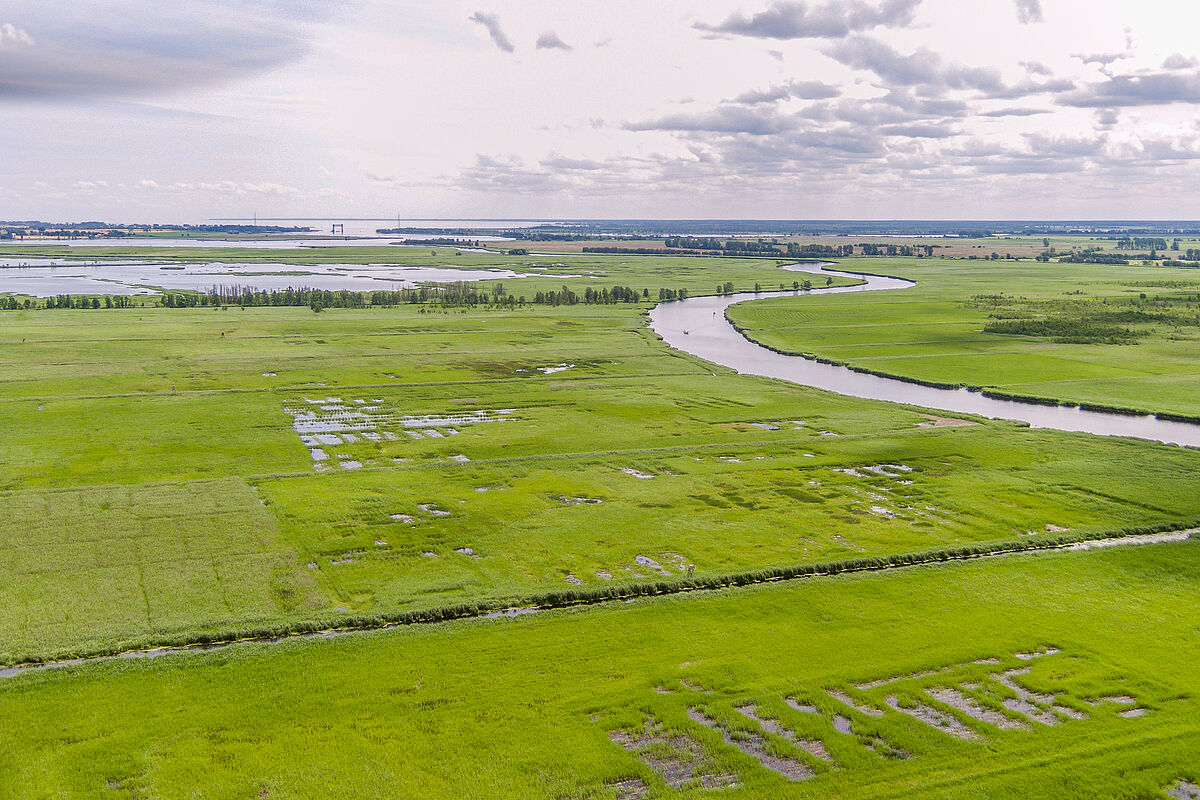Rewetted fens are novel ecosystems
The rewetting of bogs gives rise to new hydrological, geochemical and vegetation ecosystems. These must be evaluated functionally differently, i.e. the transfer of knowledge about the functionality of near-natural bogs is only possible to a limited extent. This is the conclusion of the results of a study published in the article "Rewetting does not return drained fen peatlands to their old selves" in the current issue (September 2021) of the journal "Nature Communications". Under the leadership of scientists from the Universities of Greifswald and Rostock, a large group of peatland experts from Europe compared data from hundreds of near-natural and rewetted fens in temperate zones of Europe.
Peatlands store twice as much carbon as all the biomass in the world's forests. However, many peatlands around the world have been drained for agriculture, forestry or peat extraction, thereby turning them into sources of CO2. Their rewetting is essential for reducing CO2 emissions. This connection has been clearly recognized for several years and is supported by a large number of measurement data. However, what the rewetted moors look like in concrete terms, what kind of vegetation appears and whether they are functionally similar to their natural state has not been researched very much to date. A central question was: whether and after what time the rewetted areas will resemble their original condition again. The study now provides the most comprehensive findings to date on rewetted fens in temperate latitudes.
The research team examined the success of rewetting by comparing 320 rewetted and 243 semi-natural fen sites with a comparable history in temperate Europe between Wales in the west and Belarus in the east. A special "data treasure" was the data from Mecklenburg-Western Pomerania, where more than 30,000 ha of the moorland area of approx. 70,000 ha that has been rewetted in Germany so far is located. The results suggest that rewetting of drained fens favors the establishment of tall, grassy wetland plants such as reeds and cattails. In addition to the changed biodiversity, the rewetted moors show greater fluctuations in the water level and compacted peat compared to near-natural moors. Surprisingly, the differences between rewetted and semi-natural peatlands in terms of biodiversity (vegetation) and ecosystem functions (characterized by e.g. geochemical and hydrological parameters) remain for a long time. Up to three decades after rewetting, no trend towards the conditions in near-natural bogs could be detected on average. Instead, novel ecosystems are emerging locally.
The UN Decade for Ecosystem Restoration, which started in mid-2021, is the crucial period for fulfilling our commitments under the Paris Climate Agreement, also with regard to peatlands and for peatland research. The Paris Agreement implies the rewetting of 500,000 km2 of drained peatlands worldwide by the period between 2050 and 2070. To achieve this goal, around 50,000 ha per year would have to be rewetted in Germany and around 8,500 ha per year in Mecklenburg-Western Pomerania. In order to optimally plan and implement peatland rewetting and subsequent sustainable management, a better understanding of the resulting locally novel ecosystems is required. Therefore, the authors of the article call for a concerted increase in research activities on rewetted peatlands in order to collect and coordinate data on the ecological functioning of the widest possible range of rewetted peatlands and where these are missing.
Further Informations:
Publication in Nature Communications
Nature Portfolio Ecology and Evolution
Arbeitsgruppe Workinggroup Experimential Plantecology, University of Greifswald
Greifswald Moor Centrum
Landschaftscape Ecology and Site Evaluation Standortkunde, University of Rostock
*Information on the photo: rewetted bogs in the Peenetal (Photo: Stephan Busse):
In the Lower Peene Valley, many moor areas have been rewetted since 1990. This happened partly unintentionally due to dyke breaches, e.g. during the Baltic Sea flood in 1995, partly planned through rewetting projects such as the large-scale nature conservation project "Peenetal-/Peenehaffmoor" (1992-2009) and compensation measures for the construction of the A20 motorway. The picture shows the mouth of the Peene, in the background the island of Usedom and the remains of the Karnin Bridge. The areas in the foreground were poorly drained and used for shallow peat cuttings, today they have been rewetted and are hotspots for rare moor plants. The flooded areas in the background are the former Immenstädt polder, in which massive subsidence and peat consumption occurred due to the strong drainage, so that large flat water areas developed after the end of the drainage.
Dr. Gerald Jurasinski, Prof. Dr. Florian Jansen
University of Rostock
Landscape Ecology and Site Evaluation
Faculty of Agricultural and Environmental Sciences
Justus-von-Liebig-Weg 6
18059 Rostock
Telefon +49 381 498 3225
Kontakt an der Universität Greifswald:
Prof. Dr. Jürgen Kreyling/Dr. Franziska Tanneberger
Institute of Botany and Landscape Ecology
Soldmannstr. 15, 17487 Greifswald
Telefon +49 3834 420-4131 oder -4137

